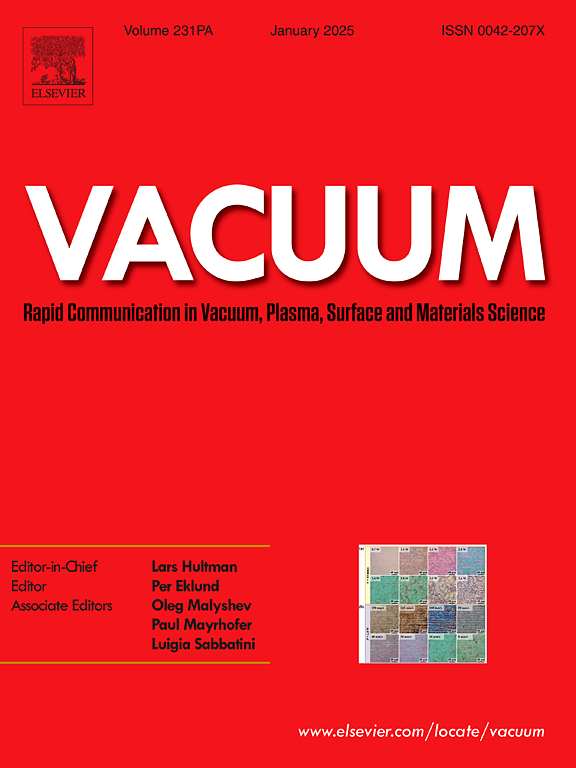Changes in the mechanical properties and structural condition of stainless steel AISI 301 caused by the combined effect of impact-oscillatory loading and cryogenic cooling. Effects caused by holding specimens in liquid nitrogen for 1 h
IF 3.9
2区 材料科学
Q2 MATERIALS SCIENCE, MULTIDISCIPLINARY
引用次数: 0
Abstract
The main patterns of the combined effect of impact-oscillatory loading (IOL) (dynamic non-equilibrium processes (DNP)) and cryogenic cooling on changes in the structural condition and mechanical properties of stainless steel AISI 301 are described. In our experiment, the steel was first immersed in liquid nitrogen for 1 h and then subjected to static tensioning at normal temperature. New structural and mechanical conditions of steel AISI 301 that occurred under DNP (εimp = 7.75 … 13.5 %) are scrutinised. In particular, it was found that for εimp = 10 … 11.5 %, the ultimate strength of the steel that was further subjected to static tensioning at normal temperature increased appreciably, and the ductility decreased. With εimp ∼10 %, the ultimate strength increased by 13.9 % compared to the baseline steel, but the relative strain remained at the level of 3.85 %. The structural conditions of steel AISI 301 and their link to new mechanical properties were studied by physical methods. A physical explanation is given for a rapid decline in steel ductility when εimp was in the range from 10.0 % to 11.5 %. With repeated static tensioning, when εimp was above 11.5 %, the ultimate strength increased significantly and ductility increased only slightly. When εimp was 13.5 %, the ultimate strength increased to 40 % compared to the baseline steel, and strain remained at the level of 7.22 %. Thus, the detected ranges of the intensity of the DNP during cryogenic cooling, at which the mechanical properties of steel, in particular plasticity, are significantly deteriorated, which is dangerous during the operation of aerospace structures.
冲击振荡加载和低温冷却共同作用下AISI 301不锈钢力学性能和组织状态的变化样品在液氮中放置1小时所产生的影响
本文描述了冲击振荡加载(IOL)(动态非平衡过程(DNP))和低温冷却对AISI 301不锈钢组织状态和力学性能变化共同影响的主要模式。在我们的实验中,先将钢浸入液氮中1 h,然后在常温下进行静态张紧。研究了DNP (εimp = 7.75 ~ 13.5%)作用下AISI 301钢的新结构和力学条件。当εimp = 10 ~ 11.5%时,钢在常温下进一步静拉伸的极限强度明显提高,而延性下降。当εimp = 10%时,极限强度比基准钢提高了13.9%,但相对应变保持在3.85%的水平。采用物理方法研究了AISI 301钢的组织条件及其与新力学性能的关系。给出了εimp在10.0% ~ 11.5%范围内,钢的延性迅速下降的物理解释。当εimp大于11.5%时,试件的极限强度显著提高,而延性仅略有提高。当εimp为13.5%时,极限强度比基准钢提高40%,应变保持在7.22%的水平。因此,低温冷却过程中DNP强度的检测范围,在低温冷却过程中,钢的力学性能,特别是塑性显著恶化,这在航空航天结构的运行中是危险的。
本文章由计算机程序翻译,如有差异,请以英文原文为准。
求助全文
约1分钟内获得全文
求助全文
来源期刊

Vacuum
工程技术-材料科学:综合
CiteScore
6.80
自引率
17.50%
发文量
0
审稿时长
34 days
期刊介绍:
Vacuum is an international rapid publications journal with a focus on short communication. All papers are peer-reviewed, with the review process for short communication geared towards very fast turnaround times. The journal also published full research papers, thematic issues and selected papers from leading conferences.
A report in Vacuum should represent a major advance in an area that involves a controlled environment at pressures of one atmosphere or below.
The scope of the journal includes:
1. Vacuum; original developments in vacuum pumping and instrumentation, vacuum measurement, vacuum gas dynamics, gas-surface interactions, surface treatment for UHV applications and low outgassing, vacuum melting, sintering, and vacuum metrology. Technology and solutions for large-scale facilities (e.g., particle accelerators and fusion devices). New instrumentation ( e.g., detectors and electron microscopes).
2. Plasma science; advances in PVD, CVD, plasma-assisted CVD, ion sources, deposition processes and analysis.
3. Surface science; surface engineering, surface chemistry, surface analysis, crystal growth, ion-surface interactions and etching, nanometer-scale processing, surface modification.
4. Materials science; novel functional or structural materials. Metals, ceramics, and polymers. Experiments, simulations, and modelling for understanding structure-property relationships. Thin films and coatings. Nanostructures and ion implantation.
 求助内容:
求助内容: 应助结果提醒方式:
应助结果提醒方式:


